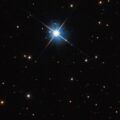These combined 18-20th installments in an ongoing series of updates from Harvard Astronomer Avi Loeb, head of The Galileo Project, document the team’s expedition to attempt the recovery of an interstellar object from the floor of the Pacific Ocean. This combined four-part entry covers Day 11 (June 21, 2023) of the team’s expedition.
Diary of an Interstellar Voyage: Part 18 (June 21, 2023)
Today, we completed Run 10 through the center of the error box provided by the Department of Defense (DoD) for the location of the first recognized interstellar meteor, IM1. Previously, we focused Runs 1-9 on the most likely meteor path in the lower part of that box based on seismometer data.
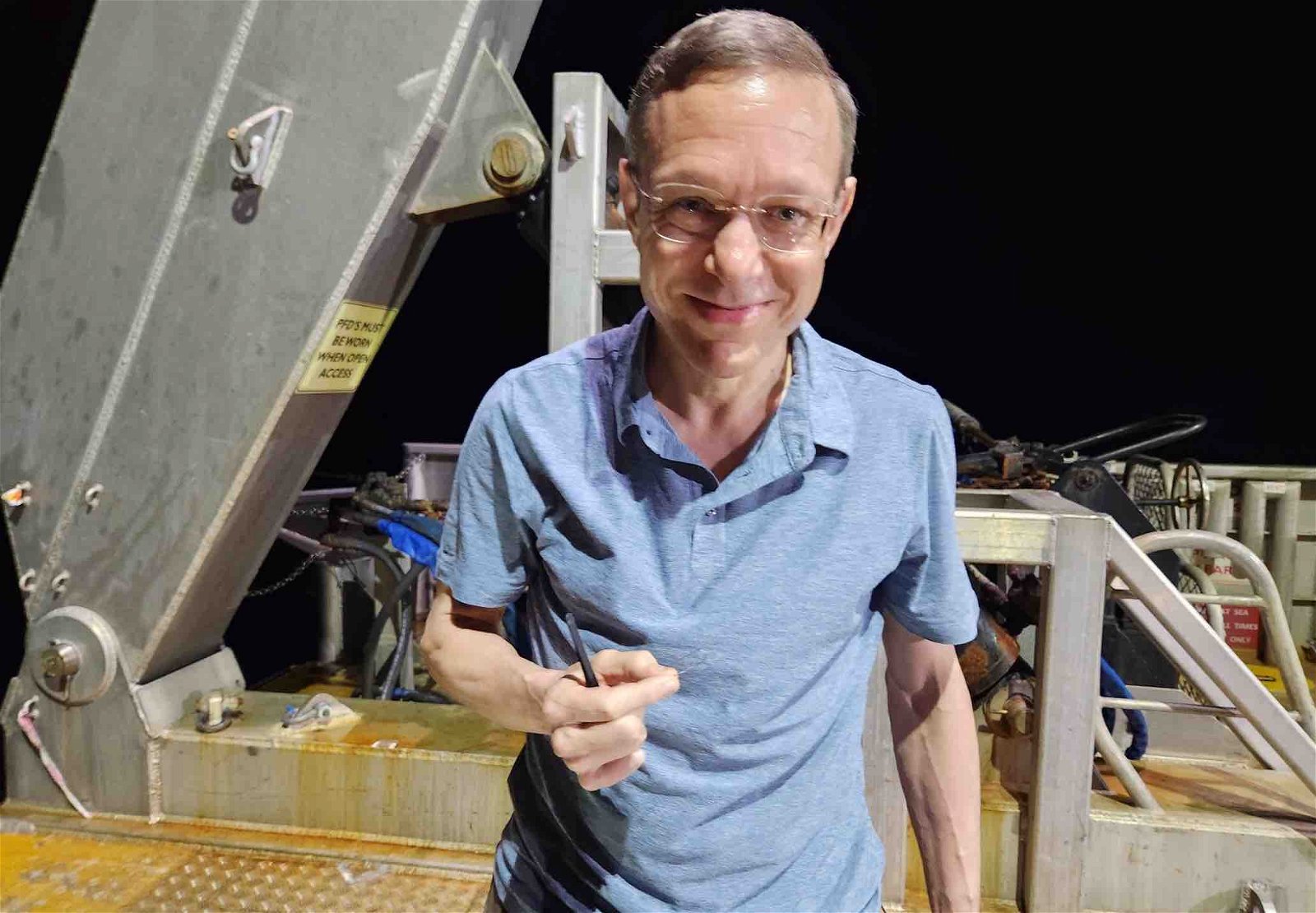

As I approached the magnetic sled, laid fresh on the deck of Silver Star like a wet fish, I noticed a bent wire attached to one of its magnets, located in the back of the light side of the sled. A quick run of the wire through the X-ray Fluorescence (XRF) analyzer implied a composition typical of common industrial wires made of stainless steel. Ryan Weed summarized the XRF reading in one word: “background.”
Our expedition team members found other wire-like objects, but further analysis by Jeff Wynn confirmed that all of them have a biological origin as forams.
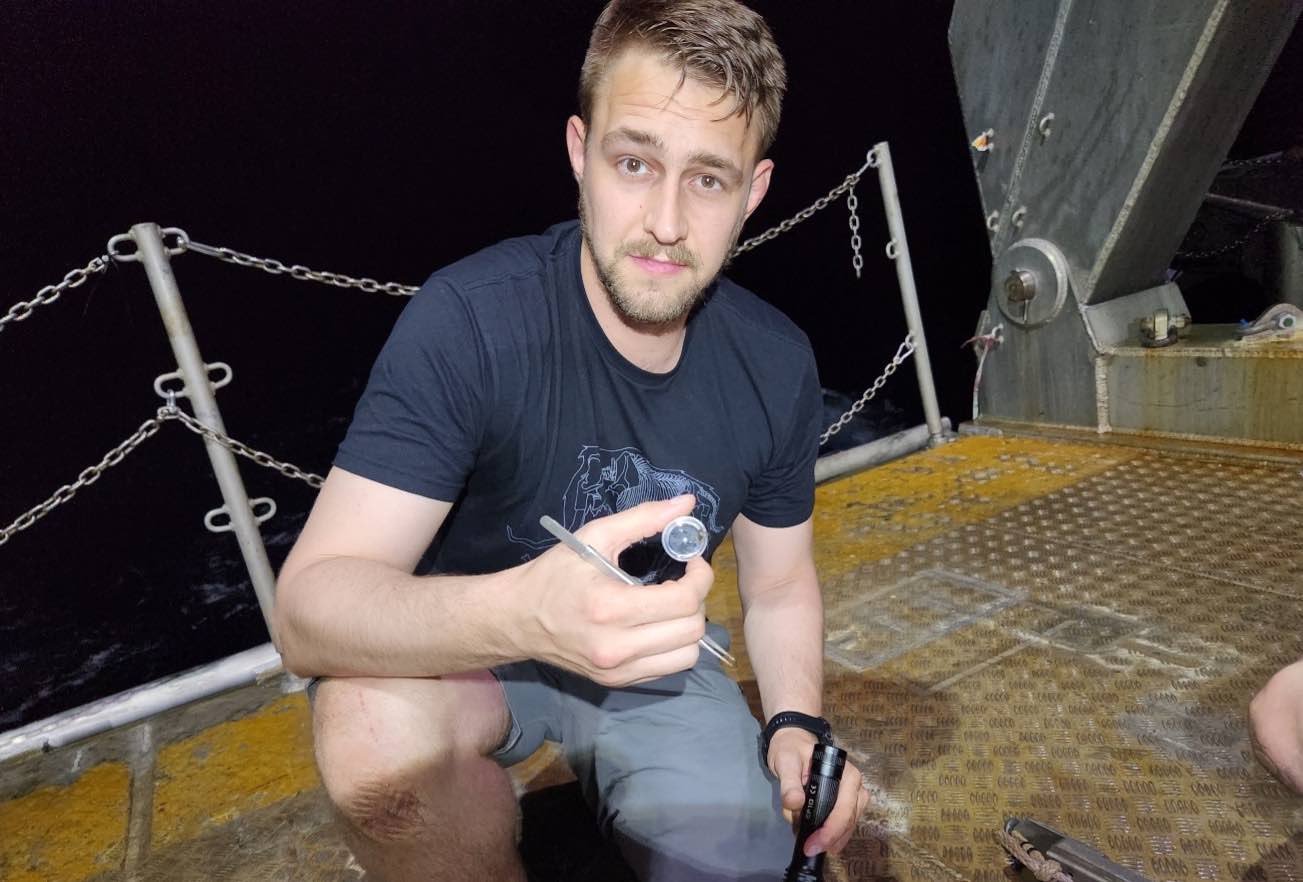

As we placed the various wires in dedicated vials, Rob McCallum asked, “What is this fascination with wires?” I explained: “Electric wires are a generic techno-signature in interstellar objects.” Surely, we are looking at the mirror when we imagine alien technologies, but our own technologies are all we have to fuel our imagination thus far.
One can imagine other techno-signatures that would not be picked up by magnets. As we were scraping the sled’s magnets, I received an email from the Israeli writer, Dror Burstein, who noted that it would be more interesting if our expedition were to retrieve an alien silicon chip or floppy drive. I replied that the expedition team is indeed planning on using a sluicing device in the coming days. If all goes well, this device will be able to separate high-density fragments from the background sand and volcanic ash, irrespective of the magnetic properties of these fragments.
It is also possible that dust particles from IM1 are hidden in the vast amount of black powder that we collected so far. Today, we will analyze a large quantity of the retrieved powder with our gamma-ray spectrometer to check whether there is any spectral anomaly relative to what is expected from volcanic ash.
Altogether, in our ten Runs of the magnetic sled, we have encountered steel shards only in Runs 6 and 7, delineating a fairly isolated geographic area not on a major shipping lane. These shards are not likely associated with a wreck because the spatial distribution is bigger than a wreck, and not trash, or we would have seen it elsewhere.
Interestingly, there is abundant evidence in the sled videos for fairly recent volcanism. The ball of calcareous-siliceous clay that “painted” a corner of the sled on Run 3 was likely shaken loose by recent faulting in this volcanic area. Faulting and volcanism are often related in tectonic fracture zones like the one we survey. Mike Williamson noted that there is a topographic ridge immediately to the east of our target zone, and this appears to be an extension of New Ireland, a long, linear volcanic island.
Following Run 10, we are now on our way to Manus Island to pick up three new team members, two of which are scientists: Professor Jim Lem from the University of Technology in Papua New Guinea and Amir Siraj, with whom I discovered IM1, who will be starting graduate studies at Princeton University in fall 2023. They will be joined by Peter Smith, who was tremendously helpful in coordinating the expedition and securing Silver Star for our scientific mission.
When embarking on a trip, it is usually the case that one transitions from living quarters to a travel vehicle. However, given that the ship is our current home and we carry our belongings everywhere like a turtle, the only transition associated with our trip to land is that the captain changed course.
The visit to Manus Island will provide a wonderful opportunity to learn from the wisdom of the local population. Given that no knowledge on extraterrestrials was gained in Run 10, we now have a chance to gain new terrestrial knowledge on the same day. Wires are not the only source of happiness in life.
Diary of an Interstellar Voyage: Part 19 (June 21, 2023)


After completing Run 10 at the location of the first recognized interstellar meteor, IM1, our ship, Silver Star, sailed to Manus Island in Papua New Guinea (PNG) to pick up additional passengers. We had a few hours at our disposal to visit the local marketplace at Lorengau. Within an hour, I exhausted my local currency on necklaces for my wife and two daughters with time to spare on an hour-long walk back to Silver Star with Allan Peter, a PNG-born member of the expedition.
Along the way, we saw many red spots on the sidewalk, and Allan explained to me that they are being produced by local residents chewing on the betel nut when it is mixed with slaked lime and betel leaves. The chewing results in stimulant and narcotic effects, to which a major fraction of the adult population in Manus Island is addicted. The chewed substance is not swallowed but is spat out and results in permanent red stains on the teeth after prolonged use. Betel nut chewing has been linked with adverse health effects, mainly oral and esophageal cancers. Nevertheless, its use within the local community is widespread.
We stopped at a table selling hundreds of betel nuts, each equivalent to the price of two beautiful necklaces of the type I bought earlier. The expensive habit of betel nut chewing is a status symbol within the local community, and the addiction to it saturates the financial constraints on most lives.
When I heard these details from Allan and saw the numerous red spots on the sidewalk, I realized that human nature is universal and drives all terrestrial societies to a similar unfortunate state. The Western culture is currently addicted to social media and decades ago was addicted to cigarettes. Both addictions have adverse health effects; social media on mental health, and cigarettes on the lungs. But they became powerful as status symbols and placed financial constraints on their users.
If addiction to self-inflicted wounds is a universal trait among all civilizations on exo-planets, then the Fermi paradox of “where is everybody?” can be explained by the possibility that extraterrestrials are consumed by addiction and have limited remaining resources to engage with the reality beyond their home planet. Instead of a faint blue dot, their planet might be tainted with red spots like Lorengau’s sidewalks.
Finding evidence for a technological interstellar probe in the Pacific Ocean will provide evidence for a civilization that deviated from this self-destructive tendency and perhaps inspire hope for a better future for humanity.
Halfway through our way back to Silver Star, the rain started pouring down in a powerful storm. A family called us from the sidewalk into a house for shelter, and a car stopped by and offered us seats. The driver drove us all the way to Silver Star. The instinctive kindness to visitors exhibited by both gestures was extraordinary.
Upon our return to Silver Star, I found out that an extended interview I gave at my home about extraterrestrials just went live on YouTube at this link. We should take inspiration from the local PNG community and be kind to extraterrestrials whenever they visit us.
And speaking about potential visits, later today, we plan to launch Run 11 of the magnetic sled through a control region as we make our way back to the crash site of IM1. Just before that, we will test the sluicing device as an alternative option for retrieving non-magnetic particles from IM1.
There are 850 spoken languages in PNG but probably many more in the Milky Way galaxy.
Here’s hoping that encounters with extraterrestrial visitors will be marked by the kindness and generosity exhibited by PNG residents.
Diary of an Interstellar Voyage, Report 20 (June 21, 2023)
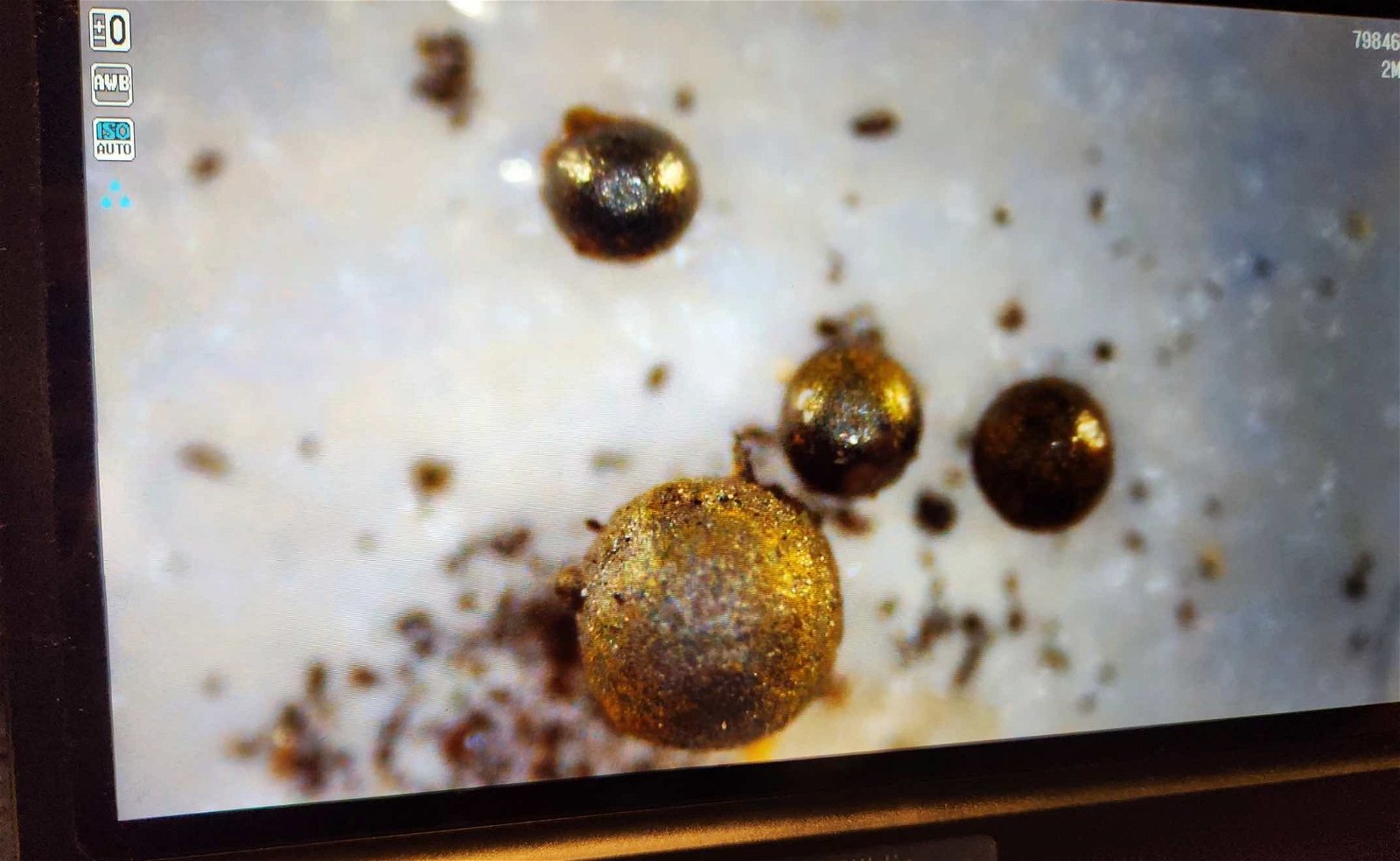

Jeff Wynn ran down the stairs to tell me: “Ryan Weed found a spherule under the microscope.” I ran up the stairs and saw the image of a spherule, 0.3 millimeters in size, looking like a metallic pearl on the background of volcanic ash. It felt like finding an ant in the kitchen. When you find one, you know that there must be many more. Indeed, I could find many more metallic spheres in the same microscope image.
I congratulated the team for the discovery and urged Ryan to immediately place the spherule in the X-ray Fluorescence analyzer to get its composition. We found a composition of mostly iron with some magnesium and titanium but no nickel. This composition is anomalous compared to human-made alloys, known asteroids, and familiar astrophysical sources.
The spherule was magnetic and separated by a filter with a comparable mesh size, so potentially, there might be many more spherules in the residue that contains smaller particles. It was collected in Run 8 that went along the upper envelope of the most likely path for IM1 based on the analysis of seismometer data in a paper that I wrote with Amir Siraj three months ago.
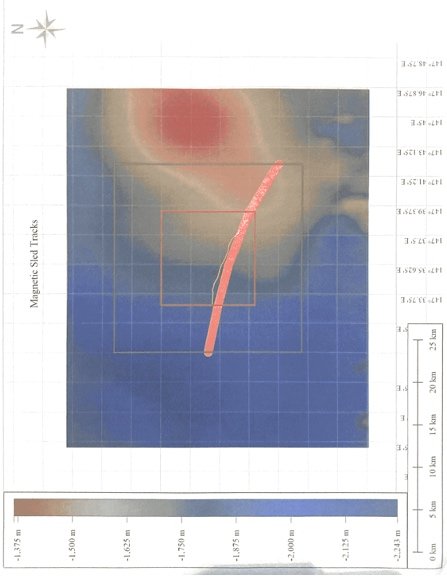

Coincidentally, Amir arrived at Silver Star just when the spherule discovery was made. This provided perfect timing for Amir to get engaged in finding many more spherules of different sizes and surveying the literature for how anomalous their composition is.
The magnetic nature of the spherules implies that we do not need the sluicing device and can continue using the magnetic sled for the coming week. Finding more spherules will allow us to pinpoint the meteor’s path and potentially seek a large object that may represent its core at the end of the path. If such an object is retrieved, its structure could inform us of its technological purpose and design.
The metallic pearl-looking spherules are embedded in the volcanic ash, and so our goal from now on is to retrieve all the magnetic material available on the sled magnets in the form of black powder and then identify the metallic pearls and separate them with tweezers. Ryan Weed, Jeff Wynn, Charles Hoskinson, J.J. Siler, and Amir Siraj are all engaged in the effort.
Proving that we can get the magnetic sled on the ocean floor allowed us to do it again and again and find materials from IM1’s fireball site. Proving that we can retrieve the first spherule from that material allows us now to do it again and again and find a large number of spherules from the IM1 in a consistent and systematic fashion.
We are now on our way back to IM1’s crash site in an attempt to retrieve as many spherules as possible. With a large enough sample, we can obtain a gamma-ray spectrum that will characterize its radioactive elements and potentially date the sample. Constraining the travel time might allow us to identify the distance and direction of its source star, given its known velocity. Our preliminary analysis implies that the composition of mostly iron, with a tenth of that in magnesium and some titanium, does not resemble known human-made alloys or familiar asteroids.
The fundamental question is obvious: was this first recognized interstellar object from 2014 manufactured by a technological civilization? Upon our return, we could produce an alloy in the laboratory that has the same composition as we infer for the spherules and analyze the resulting material properties.
I secured space to store all the retrieved materials at the Harvard College Observatory and analyze their elemental and isotopic composition with state-of-the-art diagnostics. My daughter, Lotem, who was just admitted to Harvard College, will take part in this analysis as a summer intern.
Before I left Harvard, one of my colleagues whispered: “Many people here argue that you are wasting your time in leading a hopeless expedition to the Pacific Ocean, but although I agree that the chance for success is small – I hold the opinion that the search might be just worth trying.”
As the philosopher Arthur Schopenhauer noted: “All truth passes through three stages: First, it is ridiculed; second, it is violently opposed; and third, it is accepted as self-evident.”
Gladly, the discovery of IM1 spherules of anomalous composition moves the discussion to the third stage. Given that, some colleagues might add another stage: “… and fourth, I said it first.”
Avi Loeb is the head of the Galileo Project, founding director of Harvard University’s – Black Hole Initiative, director of the Institute for Theory and Computation at the Harvard-Smithsonian Center for Astrophysics, and the former chair of the astronomy department at Harvard University (2011-2020). He chairs the advisory board for the Breakthrough Starshot project, and is a former member of the President’s Council of Advisors onScience and Technology and a former chair of the Board on Physics and Astronomy of the National Academies. He is the bestselling author of “Extraterrestrial: The First Sign of Intelligent Life Beyond Earth” and a co-author of the textbook “Life in the Cosmos”, both published in 2021. His new book, titled “Interstellar”, is scheduled for publication in August 2023.
